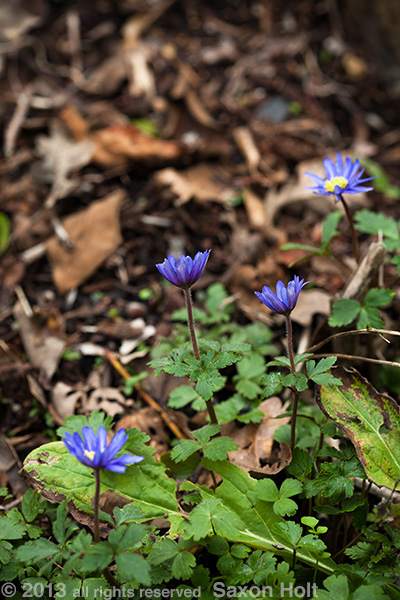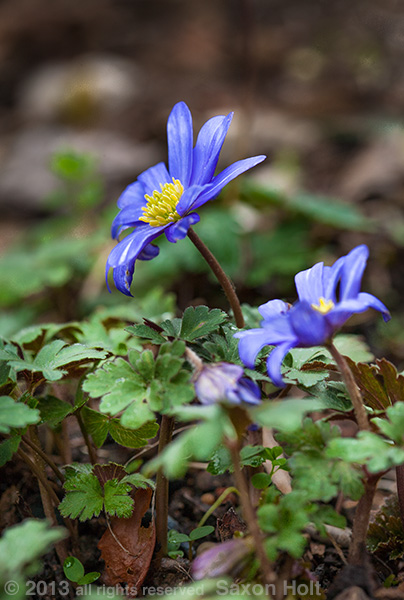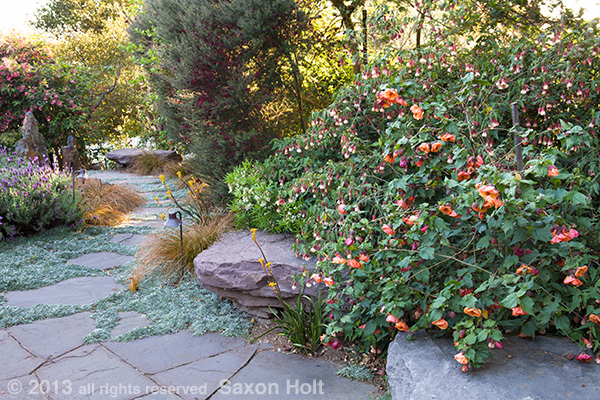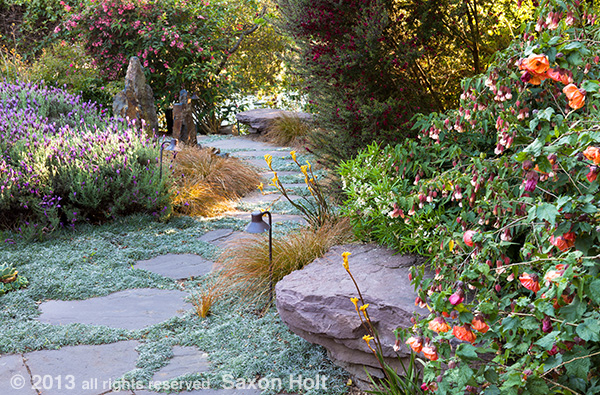Want to take better garden photos ? Before you snap the shutter, think of your point of view.
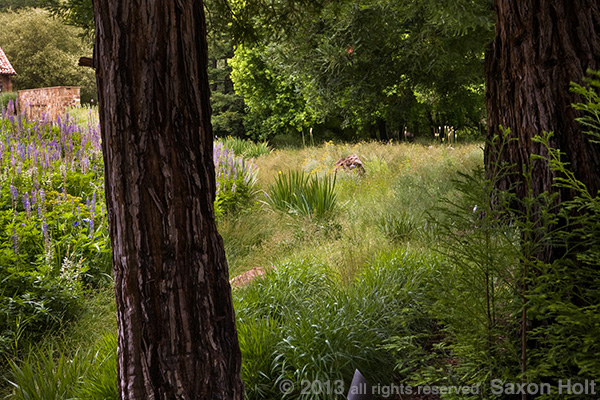
Meadow garden as seen from behind two trees – a point of view well composed between two trees that evokes a natural meadow as a clearing in a forest.
We are now deep into the PhotoBotanic Garden Photography Workshops, lesson 2.4 where I reveal the secret to good garden photography – think of your point of view. This concept perfectly transcends the first 3 chapters, as we move from Good Garden Photography – to Seeing the Garden – to Thinking Like a Gardener. You should be realizing every photo needs to tell a story – and have a point of view.
Point of view has a double meaning. On the one hand you should be conscious of why you are taking a photo, what story you want to tell. What is your opinion – what is your point of view? The camera always lies and it is up to the photographer to distill the scene in front of you to tell the story (the lie) you want told.
In order to tell your story you will need to carefully consider the scene in front of you and find a vantage point to compose your photo – you need a physical point of view. Carefully consideration of this is fundamental to composition and a well crafted photo.
Consider this fine garden room.
As soon as I saw this secret little room tucked behind shrubs just off the lawn behind this gracious home I knew there was a photo to be had. I grabbed this photo right away as I considered what I was seeing, what I wanted to say about it, and where the best angle was to be had.
I wanted to emphasize the contemplative feeling of being surrounded by these distinctive plants, having them all to oneself in this small space. I wanted to put other garden lovers here to drink in the wondrous combination of plants, to emphasize the bench among the plantings, and not be pulled out of the mood by seeing the larger garden beyond.
Did you notice the camera icon in the photo ? That’s where I’m headed; that’s where the next photo will be taken.
Fortunately there was a small garden path leading around the back of the garden room and I found a spot behind the bench, outside of the space I wanted to photograph.
Often a position outside the garden area gives you a point of view that seems to put you inside the garden. I will often walk away or back out of a scene so that I can look back into it and juxtapose elements that frame a composition (see lesson 2.1 Framing). Here, I went around to the other side of the garden in order to look back in. (FYI – the first shot was taken from where you see the pot on the path above.)
In this next example, moving the camera only a matter of inches creates a completely new point of view.
This first picture is about a water feature, stream and pond flowing through a backyard garden. The next story is more about this magical pond itself, as it adds a shimmering space for the light of the sky to reflect into the garden.
I put on a wider lens, raised the camera up on the tripod about 12 inches so I could point it back down to the pond and pick up more of the sky reflection.
Note I also needed to move about 18 inches to my left so that the strap leaves of the Iris could line up as a precise silhouette in the reflected water. Careful attention to composition detail gives an exact best position to set up, an exact point of view for the camera to communicate the point of view of the photographer.
If you study the physical point of view of those two pond photos you will realize they were both taken at fairly low angle rather than a standing, eye level point of view. While, in the next chapter, I will strongly urge you to trust your own eyes and learn to appreciate what a lifetime of eye level observations has told you about beauty, there is nothing like a change to your vantage point of view to help you see differently.
This is especially true when you photograph flowers that grow close to the ground.
If there is room to get low, even down to a belly view, you will find flowers photograph much more realistically and dramatically. This sequence was part of a Gardening Gone Wild Point of View post almost 4 years ago and I doubt many of you seeing these now will mind a repeat of the belly shots.
Certainly there are many times when you will want to shoot down into a flower (think sunflowers) but whenever you can get eye level to any subject, be it bulbs, babies, or bird nests you viewer will make a more direct connection.
I will finish this post with two photos of the same scene. The point of view has not changed very much but I much prefer the second photo. Do you? Why – or why not?
Or:
Discussion in the e-book….




